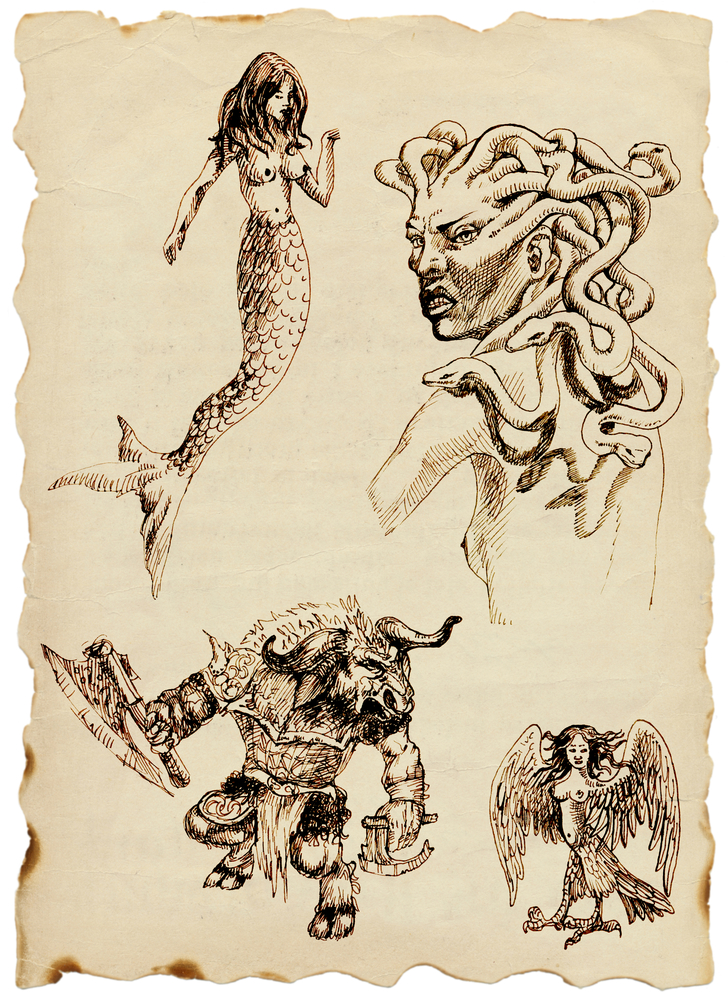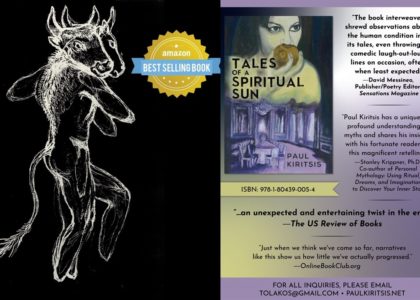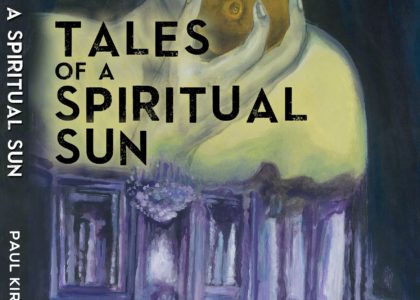
Harold Newman & Jon O. Newman, A Genealogical Chart of Greek Mythology (Chapel Hill, NC: The University of North Carolina Press, 2007)
As has been pointed out by a conscientious reviewer on Amazon.com, this book appeared on the front cover of the New York Times back in 2003 for the reason that it contains a comprehensive chart in the style of a family pedigree encompassing the famed and lesser-known personages of Hellenistic mythology. It took approximately thirty-five years for Harold Newman, a well-respected attorney from Connecticut, to put it together. Unfortunately he died before he could finish it but the project was dutifully taken up by his son, Jon O. Newman, who put the finishing touches to it in 2002 and had it published the following year. The two authors were able to establish a unitary chart expressing the known parental, marital, and extramarital relationships between mythological figures by consulting primary classical sources, namely Hesiod’s Theogony and Homer’s Iliad and Odyssey. In many instances where these references proved ambivalent or obscure in descrying the relationships between various figures other early sources were used.
This book is an invaluable, insightful, and intriguing resource for the classicist, the secondary or tertiary student of mythology, and the layperson interested in Greek culture, myth, and folklore. I cannot recommend it highly enough to those persons about to embark on a literary pilgrimage through the mythological marshes of classical Greece because it offers an overarching bird’s eye view of a mythological world whose ethereal inhabitants are in effect relatives of an extended but cosmic and divine family. Remember, connections are everything!
From “A GENEALOGICAL CHART OF GREEK MYTHOLOGY” by Harold Newman and Jon O. Newman. Copyright (c) 2003 by the University of North Carolina Press.
Though Greek mythology has been recounted by hundreds or writers throughout the world over the course of nearly three thousand years, this book endeavours to make a new contribution to the field–a comprehensive genealogical chart that displays one version of the relationships among virtually all the figures from the Greek myths who can be linked together in a single “family tree”. Many books display separate family trees of small groups of well-known mythological figures, but this is the first attempt to present a genealogical chart that connects 3,673 related figures named by the leading mythographers, with citations to an ancient source for each relationship shown.
This project makes visually apparent a remarkable aspect of Greek mythology: there are 3,673 named figures all of whom can be shown to be related to each other. They marry, sometimes more than once. They have extra-marital liaisons. They have children. Many ancient writers mentioned genealogical relationships in their verses, plays, and narratives, and Hesiod in the Theogony, the poet of the Catalogue of Women, and later Apollodorus, recounted an extensive number of relationships.
But it is unlikely that the early Greeks thought of all the figures shown on the Chart in this book as related within one comprehensive “family”. The oral tradition in which these myths originated generated accounts of relationships among relatively small numbers of figures, and as the stories were retold, different versions of a figure’s parentage emerged. As a result, there is no one authoritative version of the genealogy of the figures of Greek mythology. That is why this work is called ‘A Genealogical Chart of Greek Mythology”, not “The Genealogical Chart of Greek Mythology.” Nevertheless, from careful examination of numerous ancient writings, a comprehensive chart can be constructed that connects together a vast number of named figures, many of whom are not generally thought to have been related. This Chart and the accompanying Index, with its citations to all the relationships shown on the Chart and to many alternate versions of parentage, provide an innovative and useful framework to assist the reader in exploring Greek mythology, reviewing known relationships, and discovering relationships that might not have been known.
The figures appearing in this book span the entire cast of Greek mythology–Titans, gods and goddesses, kings, heroes, mortals, giants, monsters, centaurs, horses, rivers, winds, stars, and personifications of abstract conceptions. Twenty generations are included, displayed in an orderly arrangement that maintains each generation in a consistent position across all 72 segments of the Chart.
This book consists of three components:
(a) The Complete Chart: 72 segments that connect horizontally to form one continuous genealogical chart containing all 3,673 named figures.
(b) The Master Chart (shown above): two pages containing the principle figures from the Complete Chart and the number of the segment on which they appear. The Master Chart enables the reader to see at a glance how the figures on any one of the 72 segments of the Complete Chart connect to figures appearing on all of the other segments.
(c) The Index: a list of each of the 3,673 named figures, together with a citation to an ancient source confirming each relationship of the figure, identifying information about the figure, and a reference to each location where the figure appears on any of the 72 segments of the Complete Chart. For many figures, the entry also includes alternative versions of the figure’s parentage, with a citation to an ancient source reporting these versions.
A “Guide to the Master Chart and the Complete Chart” explains their structure and symbols, and a separate “Guide to the Index” explains its entries.
An undertaking of this sort cannot claim to be “accurate”. There was no registry of births and marriages on Mt. Olympus, or at Athens or Troy. The early writers who first recounted the myths told different versions of the same stories, often attributing different parents to the same figure and different sets of children to the same parents. Some modern mythographers have perpetuated these differences. Indeed, they have often compounded confusion by failing to recognize that many different figures bore the same name. Just as there are several people named John Smith in most English=speaking communities, it should not be surprising that in Greek mythology there are, for example, several men named Lycus and several women named Merope. Yet many writers have attributed to one figure the spouses and children of a different figure who has the same name. Confusion also arises from typographical errors occurring with similar spelled names. Some writers have referred to Pyrene when they meant Cyrene (and vice-versa), or to Lamedon when they meant Laomedon. Sometimes the same figure is rendered with two different spellings, e.g. the son of Hippocoon is called Tebrus in Apollodorus Bibl. 3.10.5, and Sebrus in Pausanius 3.15.1-2.









